Oodles of Japanese noodles, that's what we're all about. Every country has a staple carbohydrate; something that's easy to produce and provides lots of stodgy energy. In the UK it's often potatoes or bread, but in Japan, it's noodles and rice.
WHAT ARE JAPANESE NOODLES?
We're sure you know what noodles are, but generally, they are a product made from unleavened dough, which is shaped in various ways. In the USA, the term 'noodle' is often used to describe what we in the UK call 'pasta', and really they are quite similar, often being a mixture of flour and water or eggs. In Japan, however, you won't really find any shaped that differs from long, thin strips. There are, of course, different thicknesses, and some are flat whilst others are round. It's believed that pasta might have arrived in Italy due to trade connections with the noodles of China and the Far East.
Noodles arrived in Japan from an adapted Chinese recipe in the 9th Century, but it wasn't until the 1900s that ramen noodles became popular. Japan is also the home of ramen instant noodles. They were invented by a man called Momofuku Ando and sold in 1958 to the present day. The key to making this work was to dry thin noodles and offer packet sauces or flavourings as an addition.
TYPES OF JAPANESE NOODLES
Below are some of the most popularly used noodles in Japanese cuisine:
RAMEN NOODLES
Ramen noodles are a thin type of egg noodle that originated in China. Sometimes called Chuka Soba or Chuka Men. They are wheat-based, and are made from flour, salt, water and kansui, which is alkaline water - it can be made artificially, but the best and most desired ramen noodles are made from companies situated on famous alkaline lakes. These noodles have a firm texture, which makes them ideal for serving in broths.
You can buy instant ramen in packets or cups (the ubiquitous British pot noodle is, in fact, Japanese at origin!). This instant ramen noodles often come accompanied with a serving of seasoning powder to make the soup and often toppings such as flavoured oil and dried vegetables.
Ramen is even available pre-cooked in single-serving packets. These "fresh ramen" are semi-cooked and packed in 150g portions with preservatives meaning you can keep them at ambient temperatures in your store cupboard. You can simply drop the fresh ramen into pre-made rame stock and serve instantly.
SHIRATAKI NOODLES
Shirataki are thin, clear noodles made from konnyaku. Konnyaku is made from pureeing the root of a Japanese yam-like plant called Konjac. Shirataki noodles have a chewy, rubbery texture. They are famous outside of Japan as a diet noodle. This is because they have almost no fat, carbs or calories.
SOBA NOODLES
Soba noodles are made from buckwheat; which is a great source of protein, fibre and B vitamins. Soba noodles are ideal for use in soups, and in Japan, they are often served cold on a bamboo zaru soba tray to be eaten with a dipping sauce such as Tsuyu. Confusingly yakisoba noodles are in fact ramen noodles!
SOMEN NOODLES
Somen are very thin, light noodles that make a perfect dish in the summer when served cold with dipping sauces and soups.
UDON NOODLES
Udon noodles are very thick noodles often used in soups or served with sauces. They have a chewy texture and are made from wheat flour. The very best Udon are called Sanuki udon and come from Kagawa prefecture in Japan. Udon noodles either come in dried form or as pre-cooked "fresh" Udon in 200g packets. The fresh udon cam is put into ramen soup and served immediately with no need to cook.
HARUSAME GLASS NOODLES
Harusame, also known as glass noodles or cellophane noodles are made from dried bean curd. In China, they are called Lungkou, in Italy vermicelli. This is a noodle of many names! Nice used as part of a salad or garnish. The delicate texture and neutral flavour lend it'self to simple dishes. You can even deep fry them and use them as a crispy topping.

